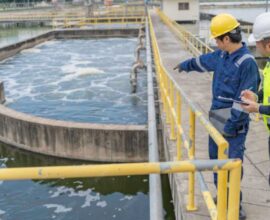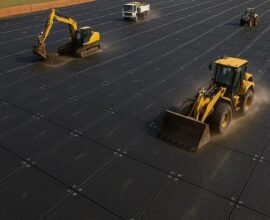Pipelines may look calm from the outside, but internally, they’re constantly dealing with pressure surges, temperature swings, and structural stress. And all of that movement eventually shows up as vibration or misalignment two issues that can quietly chip away at pipeline health. That’s where a lateral expansion joint steps in as a surprisingly elegant solution.
Why Vibration and Misalignment Deserve More Attention?
If you’ve ever stood near a pump house or a high-temperature pipeline, you can almost feel the system working—sometimes a little too hard. Vibration doesn’t just create noise; it accelerates wear, loosens supports, and slowly weakens pipeline integrity. According to a study referenced by the U.S. Department of Energy (energy.gov), uncontrolled mechanical vibration can reduce equipment life by a significant margin over time.
Misalignment, meanwhile, can be just as sneaky. A few millimeters off during installation? No big deal until thermal expansion, shifting soil, or pump movement adds to the displacement. Before long, you’ve got extra stress on welds, flanges, and anchors, and that usually translates to higher maintenance costs down the line.
The Magic Behind Lateral Expansion Joints
This is where the engineering charm of lateral expansion joints really shines. Instead of fighting natural movement, they welcome it, redirect it, and distribute it safely across the system. These joints essentially act like shock absorbers absorbing vibration and allowing lateral flexibility without compromising flow stability.
How They Reduce Vibration?
- Dampening mechanical waves: The bellows structure disperses vibration energy before it can travel through the rest of the pipeline.
- Breaking the vibration chain: By isolating sensitive components, the joint interrupts the transfer of harmful oscillations.
- Reducing anchor load: Lower vibration equals less fatigue on supports, anchors, and adjacent equipment.
In facilities like chemical plants and refineries, where flow variation and thermal expansion are constant challenges, vibration management becomes crucial. The American Society of Mechanical Engineers (asme.org) notes that reducing vibrational stress is one of the most effective ways to extend the life of metal components.
Helping Pipelines Stay Aligned—Even When They Move
Alignment sounds simple until you’re dealing with hundreds of meters of piping that expand, contract, twist, and bend ever so slightly throughout the day. That’s precisely why engineers rely on the strategic placement of joints that permit controlled movement.
A lateral expansion bellow is built to absorb sideways displacement without transferring harmful loads to adjacent sections. It’s essentially a safety cushion for pipelines undergoing thermal cycles or structural shifts.
Where Misalignment Most Commonly Occurs?
- Thermal expansion in long steam or oil transport lines.
- Micro-movements around pump systems and turbine housings.
- Structural settling near foundations or elevated pipe racks.
The objective isn’t to eliminate movement entirely it’s to manage it intelligently. And when you combine expansion joints with proper guiding systems and fixed anchors, you get a pipeline that moves predictably instead of haphazardly.
What Makes a High-Quality Lateral Expansion Joint Truly Efficient?
Design matters. Material matters. And surprisingly, even the smallest convolution detail matters. Manufacturers like Flexpert Bellows Pvt Ltd emphasize that an expansion joint isn’t just a metal component it’s a fatigue-resistant, pressure-holding, movement-absorbing piece of precision engineering.
- Multi-ply design: Better resilience and longer fatigue life.
- Corrosion-resistant materials: Stainless steel and alloys help withstand heat, chemicals, and pressure cycling.
- Strategic tie rods: These control thrust loads and maintain pipeline stability during lateral displacement.
Professionals also often combine these joints with keywords like “pipeline flexibility,” “thermal movement control,” and “industrial piping vibration solutions” all of which describe the ecosystem these joints operate in.
Frequently Asked Questions
1. Can a lateral expansion joint handle both vibration and misalignment?
Yes. It’s designed to absorb lateral displacement while simultaneously dampening vibration, making it ideal for dynamic pipeline environments.
2. Do these joints work in high-temperature applications?
Absolutely. Most high-quality joints are built from stainless steel or heat-resistant alloys, making them suitable for boilers, refinery units, and steam systems.
3. Are lateral expansion joints difficult to maintain?
Not really. They require periodic inspection but typically have low maintenance needs compared to other vibration-control components.
4. How long do these joints last?
Service life depends on pressure, temperature cycles, and installation quality, but well-engineered joints often last many years in demanding settings.
Final Thoughts
Lateral expansion joints prove that smart engineering isn’t always loud or dramatic sometimes it’s simply about embracing the natural movement of metal and turning it into an advantage. With the right design and placement, these joints help pipelines operate more smoothly, safely, and efficiently for years longer than they otherwise would.





